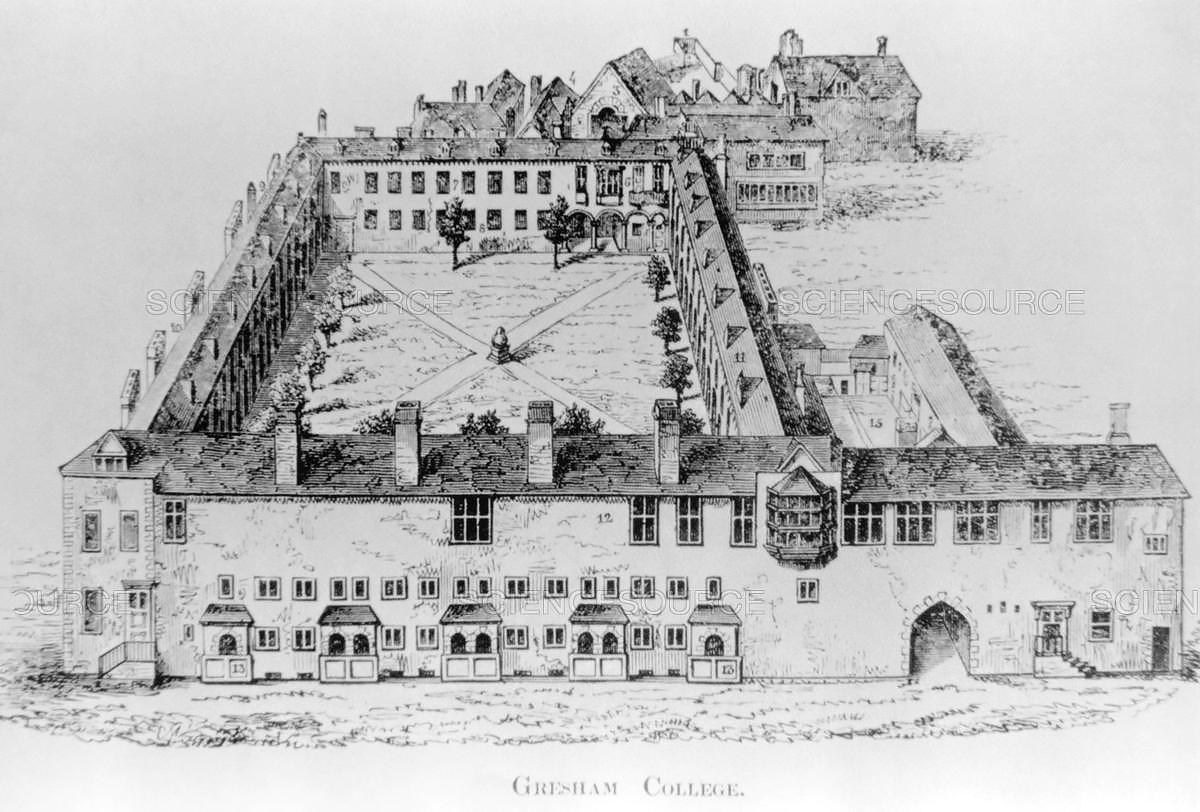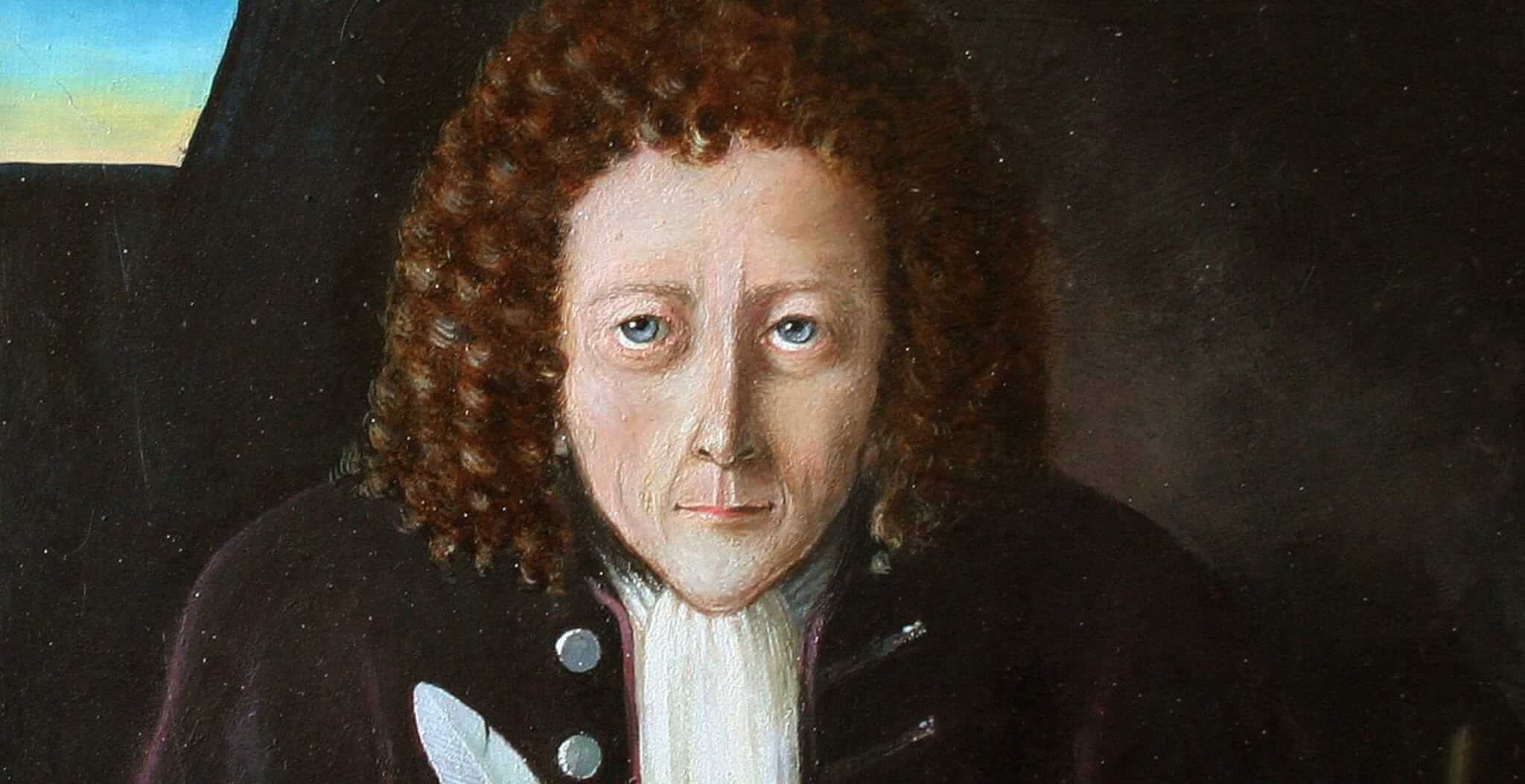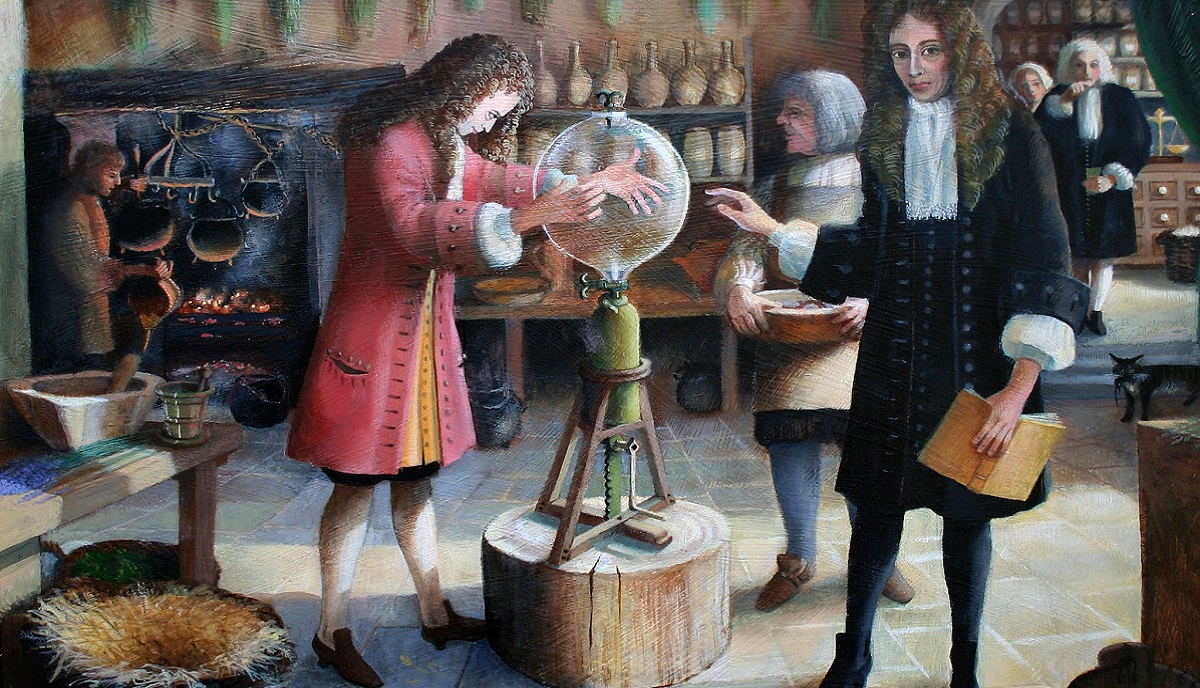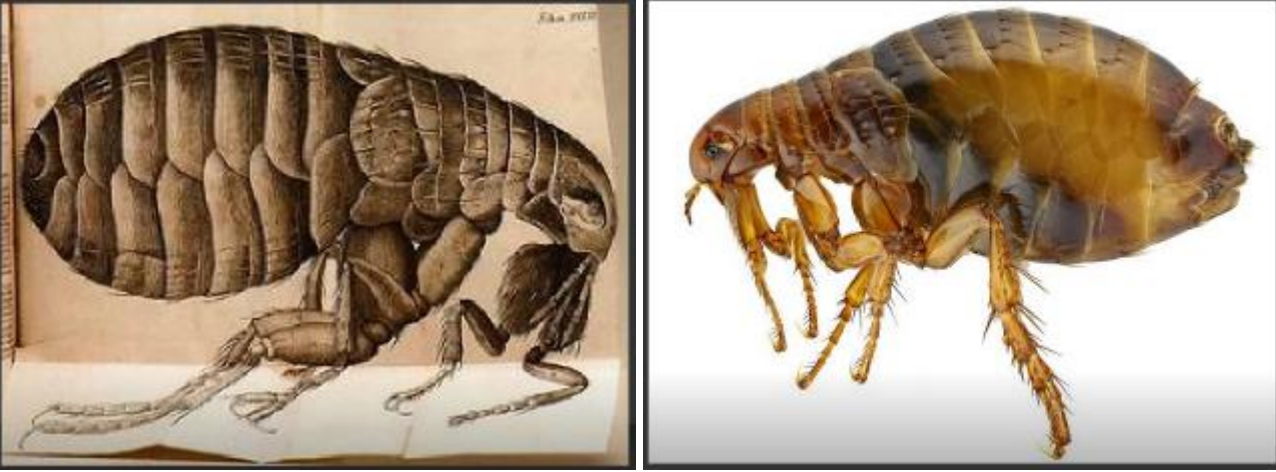
I continue my series of posts on the history of science popularization. This time it will be about England.
More precisely, about Oxford. In the 1650s, a circle of 15 relatively young and educated people was formed there, which they themselves called simply The Company or "invisible college."
Led by John Wilkins, they conducted various experiments. First, they reproduced the experiments of Galileo and Torricelli, then they began to invent their own. This activity revived in 1653, when a physicist, chemist and theologian in one bottle, the Earl of Cork, better known in the history of science as Robert Boyle , came to Oxford from London . Soon Boyle had a young laboratory assistant from Oxford students - Robert Hooke . He will then be the main character of today's post.
The members of the "college" had fun from the heart - they set up various experiments with an air pump, observed the moon through an eighty-foot telescope, injected various injections into the blood of animals and designed diving ships. And after some time, they decided that it was time for them to expand their audience, in order to show that not only Italians, but also the British can go into science. And in order to immediately put the case on a reliable base, they decided to enlist the support of the king. Charles II, who ascended the throne following the results of the civil war, believed that science is a useful thing for the stateand even conducted some kind of chemical experiments in the palace (kings can entertain themselves in different ways). So he supported the idea of Oxfords (most of whom had already moved to London, where it became safe), and the Royal Society of London was born.
Robert Hooke was not officially included in the number of its founders (since he was only Boyle's laboratory assistant), but his role was also very important.

Hooke, unlike the “founding fathers” (mostly university teachers), was not only a simple laboratory assistant, but also of an ordinary origin. Quite poor, to put it simply. Therefore, it was decided that in exchange for some salary from the Society's budget, he will undertake the preparation of the experimental work and the holding of weekly open seminars to demonstrate scientific achievements . Therefore, he can be considered one of the first professional popularizers of science.
Actually, on this side of his activities, I would like to focus most of all. Although Hooke was undoubtedly primarily a talented scientist, he is called one of the "fathers of experimental physics." Yes, and colleagues of Hooke respected and after a year of work was elected a full member of the Royal Society.
In terms of seminars, Hooke was given a twofold challenge. First, to develop experimental studies of nature, and secondly, to demonstrate the capabilities of science to people who are far from science. The society included many aristocrats, and in order for them to pay membership fees (and the society lived on them), it was necessary for them to be interested. Therefore, for each seminar (and they were held weekly), Hooke prepares experiments and a "questionnaire" - a list of questions that must be answered in order to comprehensively investigate this phenomenon.

For such work, Hook had to make a lot of devices himself, and some even to develop from scratch. As a result, Hooke's contribution to the human knowledge bank is impressive.
Here are just a few examples. Investigating the laws of mechanics, he came up with mechanisms for reproducing the movement he needed or for transforming one type of movement into another. And as a result, he invented a cardan joint that could transfer rotary motion between two axles located at a slight angle to each other. This hinge is still widely used today.
His other work concerned the improvement of the gear train: his idea was that no impact should occur between the teeth of the wheels, and this is possible if the teeth of the wheels are in constant contact with each other, and their point of contact lies on a straight line connecting the centers of the wheels.
One more example. Hooke's area of scientific interests was very wide and once he became interested in micrography - the study of objects that the ordinary eye could not really see. Further history is a typical Hooke . First, he made a microscope himself (Aliexpress was not yet there) Then he spent fifty studies, examining everything that was at hand and fit in size. But how could they demonstrate their results to others? And Hooke began to redraw what he saw. And he painted very well. In the illustration below, on the right is a photo of a flea taken in our time, on the left is a drawing by Hooke. You can appreciate the detail.

When he showed this drawing at his seminars, the ladies fainted (apparently, imagining that THIS was periodically jumping on their clothes). To prevent the drawings from fraying quickly, Hooke began to make detailed engravings on their basis. Again myself, with my own hands. And when there were a lot of drawings, he published the book "Micrography" with his illustrations. Thanks to them, the scientific treatise became popular among people who seem to be far from science. This is how another famous popular science book turned out. But the well-known, alas, not here - it has not yet been translated into Russian.
Hooke spent a lot of time on the invention and creation of various meteorological instruments.- meters for temperature, pressure, air humidity, wind direction and speed. By the way, some of their modern counterparts use the principles laid down by Hooke. For example, in the barometer.
It is possible to list Hooke's works for a long time. But there is one important nuance. He constantly did not complete his studies, when due to lack of money, when due to lack of time (it was necessary to prepare the next seminar). This work was done by others, the same Boyle, they also received all the glory. What drove Hooke to white heat, he got involved in disputes about priority, but they rarely ended successfully for him, because formally his work was completed by others (even if he often did the bulk of it), or, having done similar research later, documented their results, which Hooke also did not always bother with.
The situation was aggravated by the fact that Hooke was, in modern parlance, an introvert and a hot-tempered person. And also - a hunchback with poor health, which, coupled with the load, also sometimes served as a reason to quit research without completing it. In general, this is how he went down in history as the author of the law of elasticity and the inventor of a number of mechanisms. Although his contribution to science is much greater. And how many people (and very influential people in England) have changed their attitude to science thanks to his weekly seminars is impossible to count.